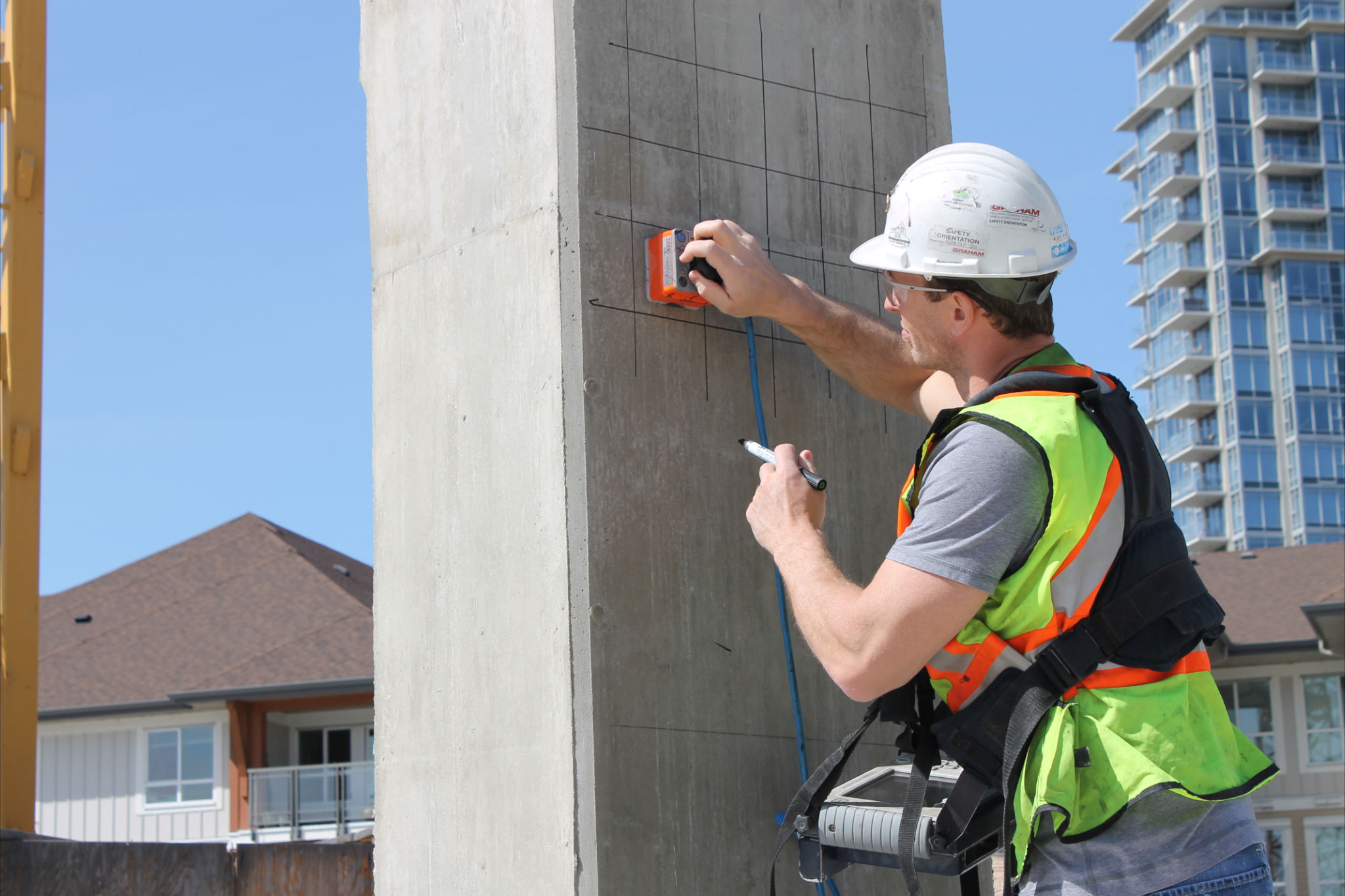Enhance Project Effectiveness with RainierGPR Concrete Scanning Services
Wiki Article
Discovering the Depths: A Comprehensive Guide to Concrete Scanning and Its Diverse Applications
In the realm of building and construction and framework advancement, the careful procedure of concrete scanning holds a crucial duty in making certain the architectural stability and safety and security of jobs. As modern technology continues to evolve, the applications of concrete scanning have expanded far past simple surface-level assessments.Importance of Concrete Scanning
Understanding the value of concrete scanning is important in making sure the security and integrity of structures throughout building and construction and restoration projects. Concrete scanning uses sophisticated modern technologies such as ground-penetrating radar (GPR) and electro-magnetic induction to detect ingrained objects, voids, or other anomalies within concrete structures.Additionally, concrete scanning plays a crucial duty in making certain conformity with building regulations and guidelines that mandate the defense of existing architectural components throughout building and construction tasks. By precisely drawing up the inner composition of concrete, scanning innovations enable building specialists to make informed choices that maintain the architectural security and toughness of buildings and framework tasks. Basically, the significance of concrete scanning exists in its ability to secure both the architectural stability and the employees involved in building endeavors.
Technologies Used in Concrete Scanning
Concrete scanning counts on advanced innovations such as ground-penetrating radar (GPR) and electro-magnetic induction to accurately find ingrained items and anomalies within concrete structures. Ground-penetrating radar runs by giving off high-frequency electro-magnetic waves right into the concrete. When these waves come across various materials or spaces within the concrete, they recuperate to the surface area, permitting the GPR system to develop a thorough subsurface image. This modern technology is especially reliable in locating rebar, post-tension cords, avenues, and other objects installed in concrete.Electromagnetic induction, on the other hand, functions by creating electro-magnetic areas around a concrete framework via a transmitter coil. When metal items exist within the concrete, they disrupt these electromagnetic fields, creating eddy currents to move through the metal. By determining the modifications in the magnetic fields with a receiver coil, the system can identify the location of metal things in the concrete.
These cutting-edge modern technologies play a crucial duty in non-destructive screening, making certain the safety and honesty of concrete frameworks in different sectors.
Applications in Building Market
Within the construction sector, concrete scanning technology locates varied applications that boost project effectiveness and security. Additionally, concrete scanning is used for finding spaces, such as air pockets or locations of official site damage within concrete, which can compromise the overall strength of a structure. Concrete scanning plays an important duty in high quality control by verifying the thickness of concrete covers over support, ensuring conformity with design specifications and criteria.
Safety And Security Benefits of Concrete Scanning
In the world of construction security, the application of concrete scanning modern technology presents a paramount benefit in preemptively determining prospective threats and fortifying architectural honesty. By utilizing advanced scanning approaches such as ground-penetrating radar (GPR) and electromagnetic induction, building teams can accurately locate rebar, post-tension cables, read channels, and other hidden things within concrete structures. This positive method substantially minimizes the risk of unintended strikes throughout exploration, cutting, or coring activities, thereby preventing costly problems, injuries, and job hold-ups.Moreover, concrete scanning improves worker security by supplying real-time information about the structural condition of concrete components. This data makes it possible for building and construction experts to analyze the honesty of existing structures, identify deterioration or problems, and make informed choices regarding repair service and maintenance procedures. By resolving potential safety and security concerns immediately, concrete scanning contributes to developing a secure workplace and reducing the possibility of structural failures or crashes on building and construction sites. Ultimately, the safety and security benefits of concrete scanning not only secure assets and lives however additionally maintain market requirements for quality and reliability.
Future Trends in Concrete Scanning
Arising improvements in scanning technology are poised to revolutionize the area of More Help concrete examination and evaluation. One major fad that is obtaining traction is the integration of fabricated intelligence (AI) and artificial intelligence algorithms into concrete scanning gadgets. By utilizing the power of AI, these systems can analyze vast quantities of data accumulated throughout scanning processes to offer more detailed and accurate insights right into the condition of concrete frameworks. This can aid in spotting concealed flaws, anticipating potential structural failures, and even recommending maintenance strategies.Another considerable fad is the growth of even more straightforward and portable scanning tools. Miniaturization of scanning tools enables for less complicated accessibility to restricted spaces and remote areas, making examinations a lot more reliable and thorough. In addition, innovations in wireless communication modern technologies allow real-time data transfer and evaluation, assisting in quicker decision-making processes.
In addition, there is a growing concentrate on sustainability in concrete scanning innovations - RainierGPR Concrete Scanning. Manufacturers are increasingly including green materials and energy-efficient attributes into their devices to minimize environmental influence. These future fads are readied to boost the effectiveness, precision, and sustainability of concrete scanning practices, shaping the market's future landscape
Conclusion
In final thought, concrete scanning plays a critical role in the building industry by guaranteeing the security and performance of numerous projects. As innovation developments, the future of concrete scanning holds encouraging growths for improving construction processes.

Report this wiki page